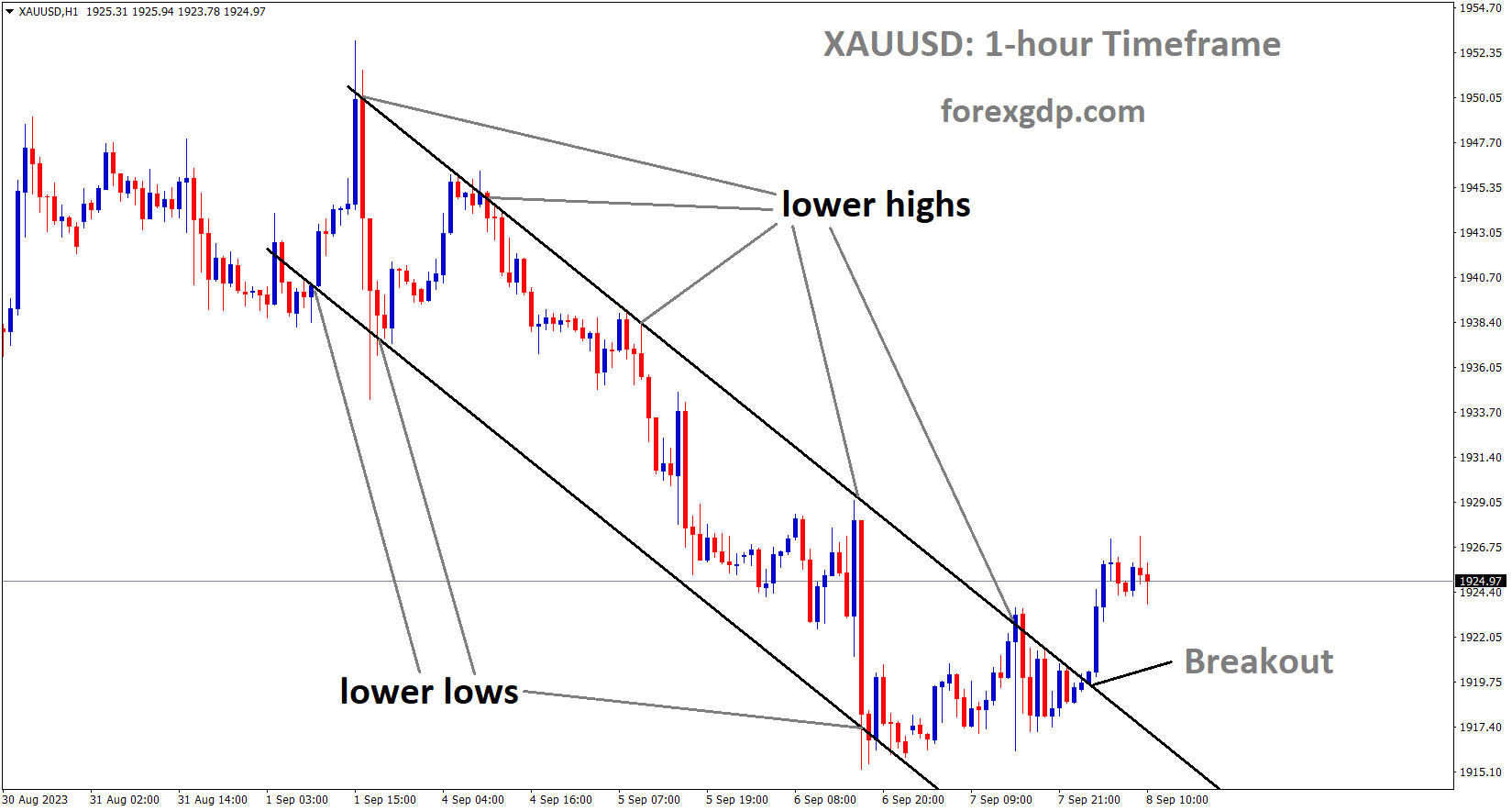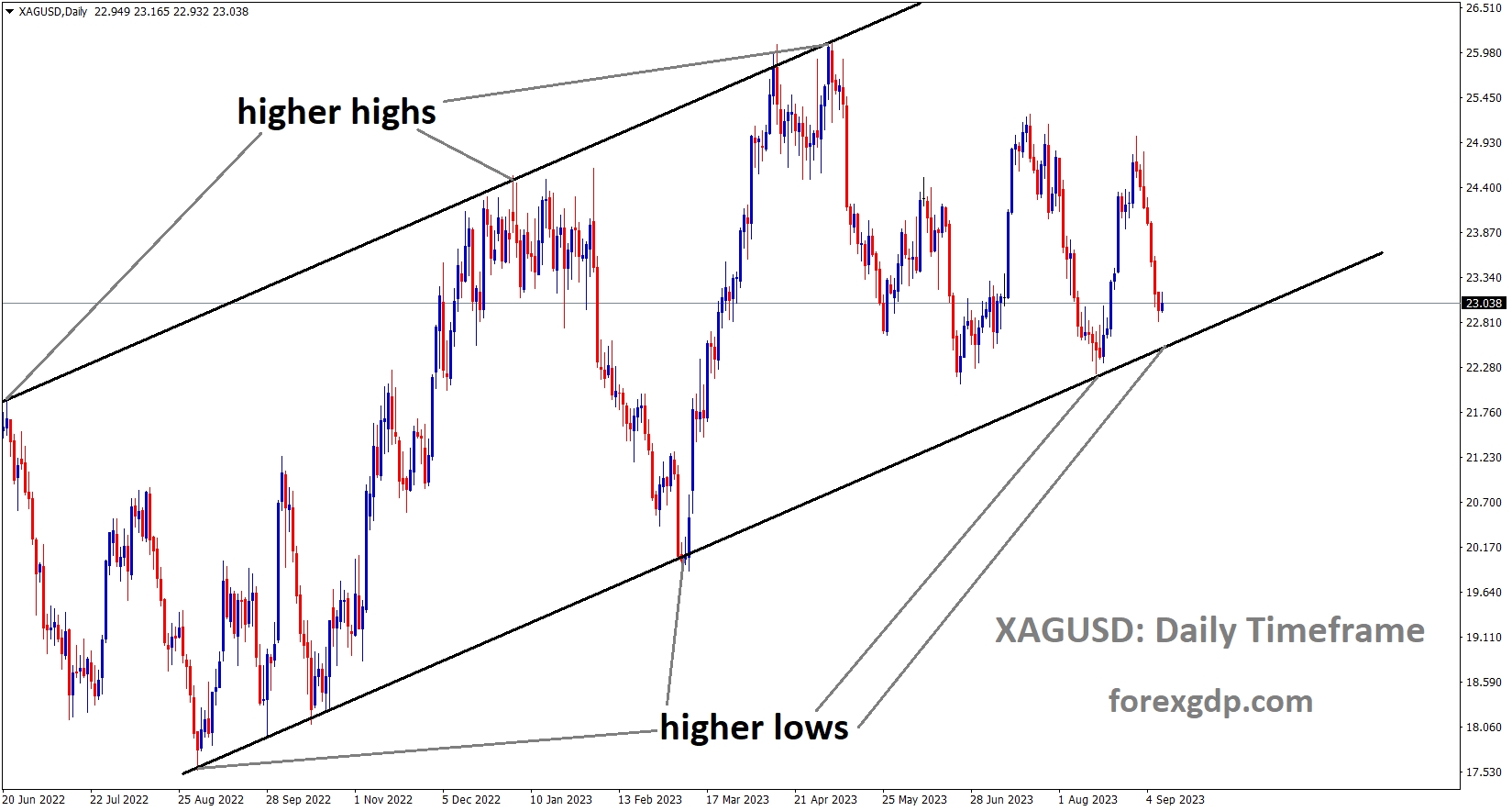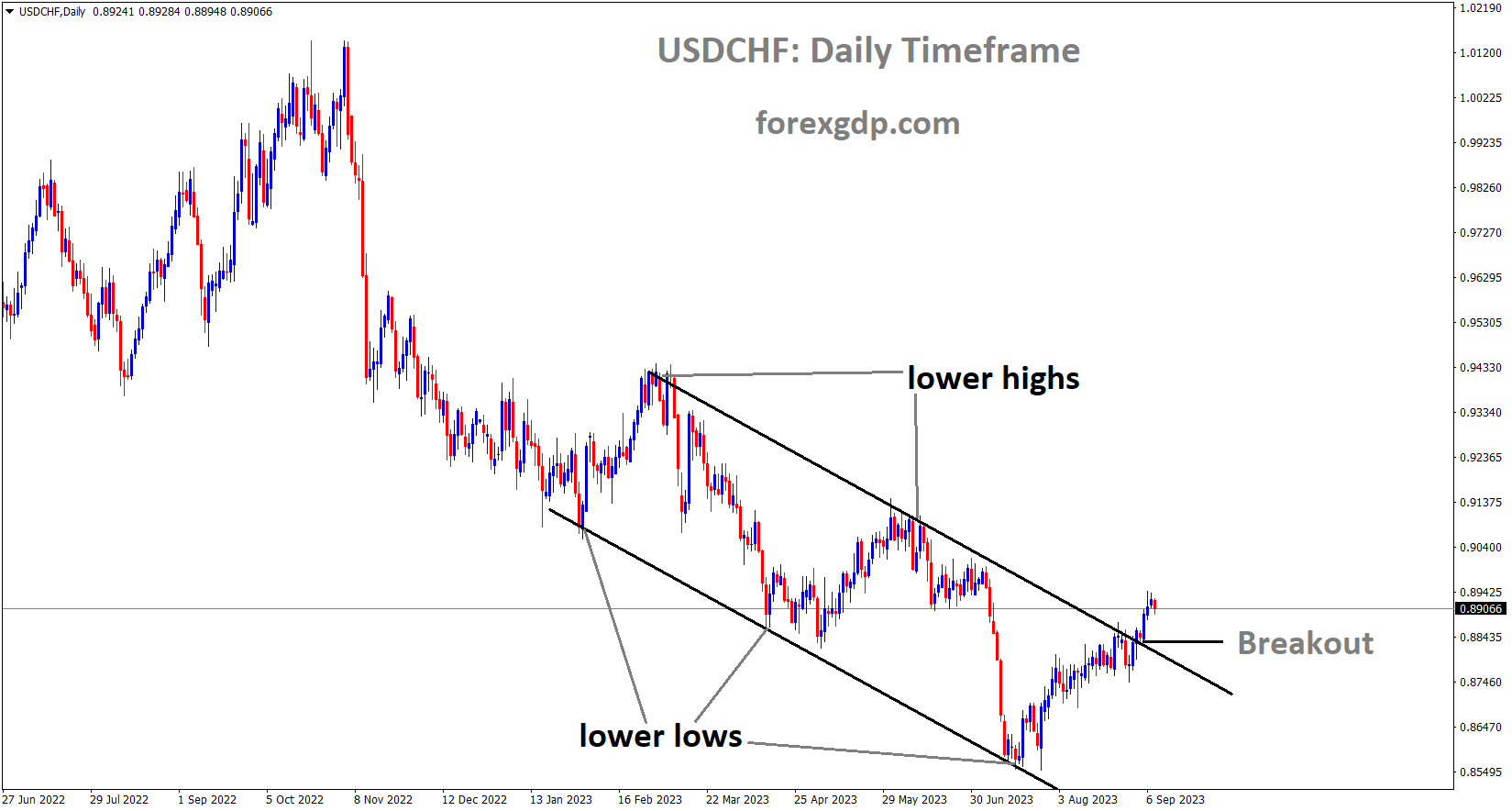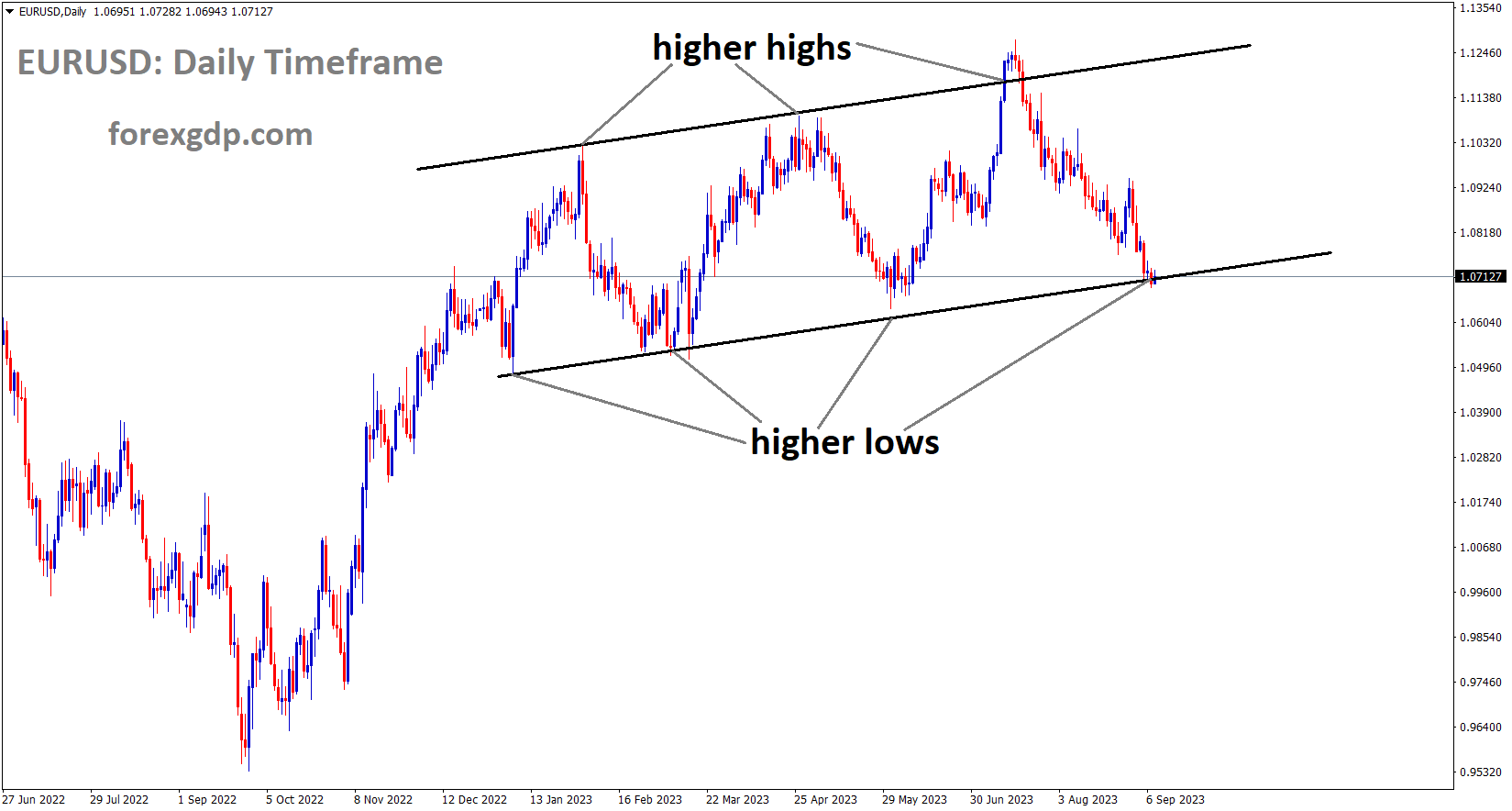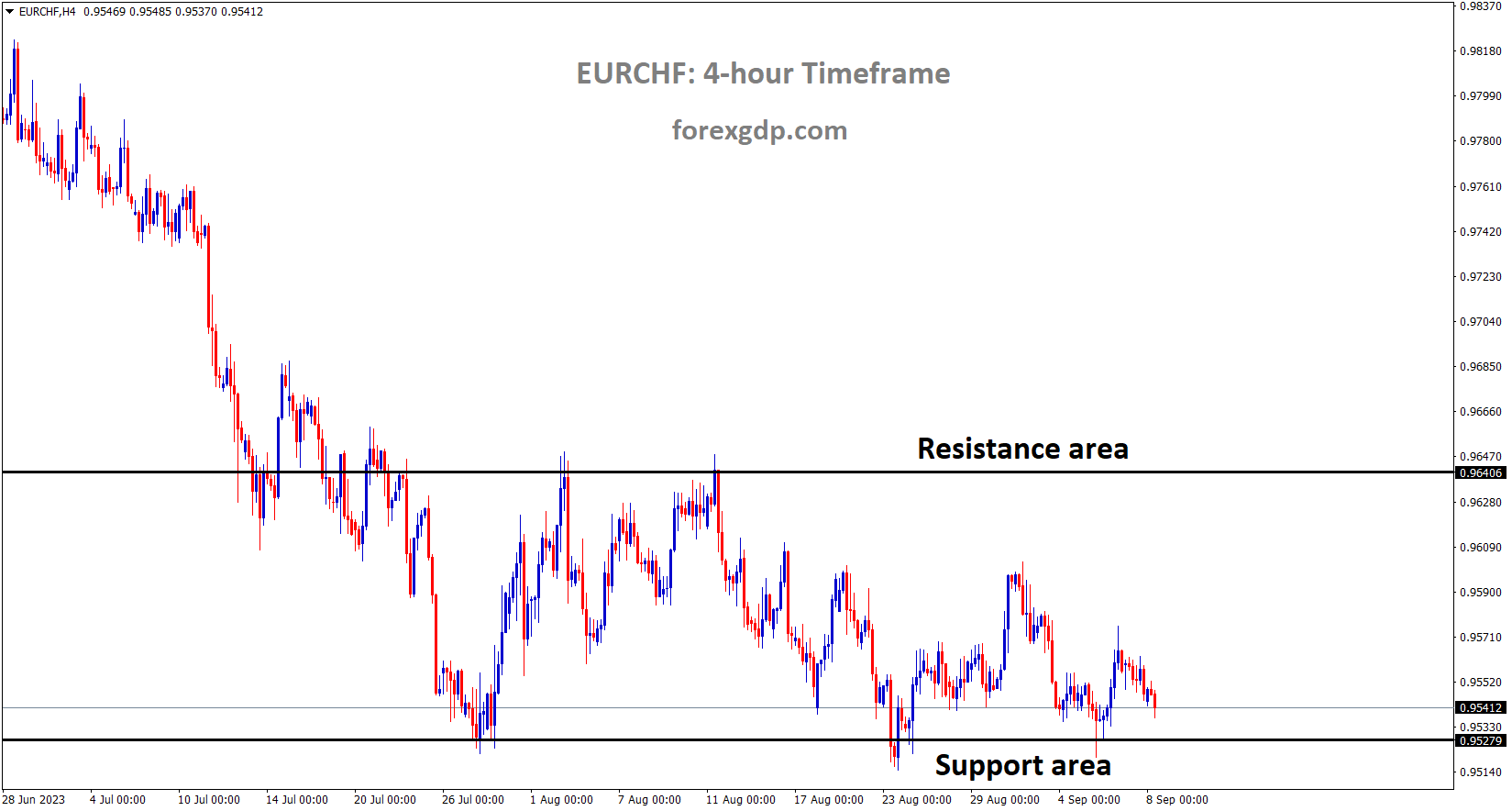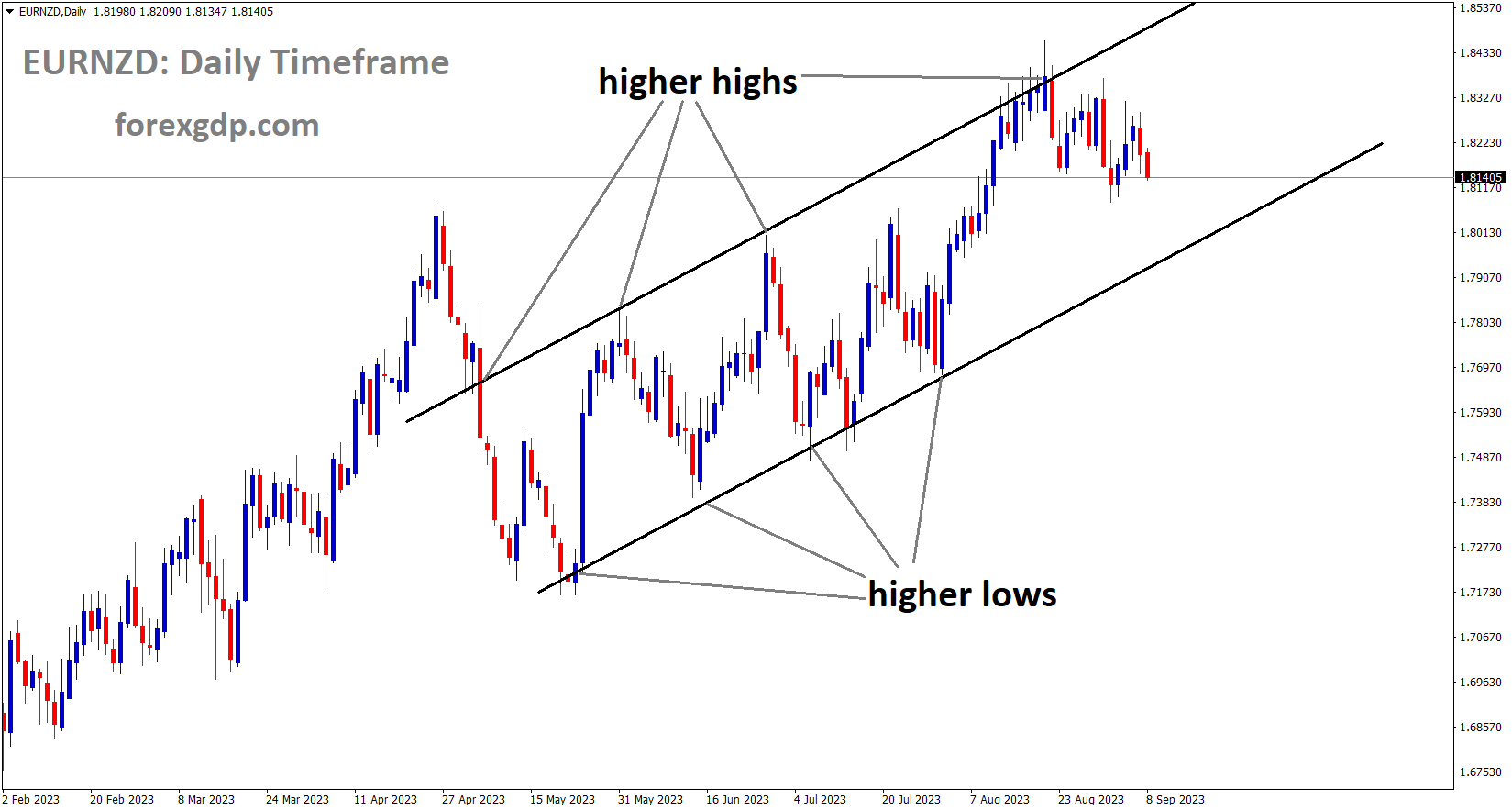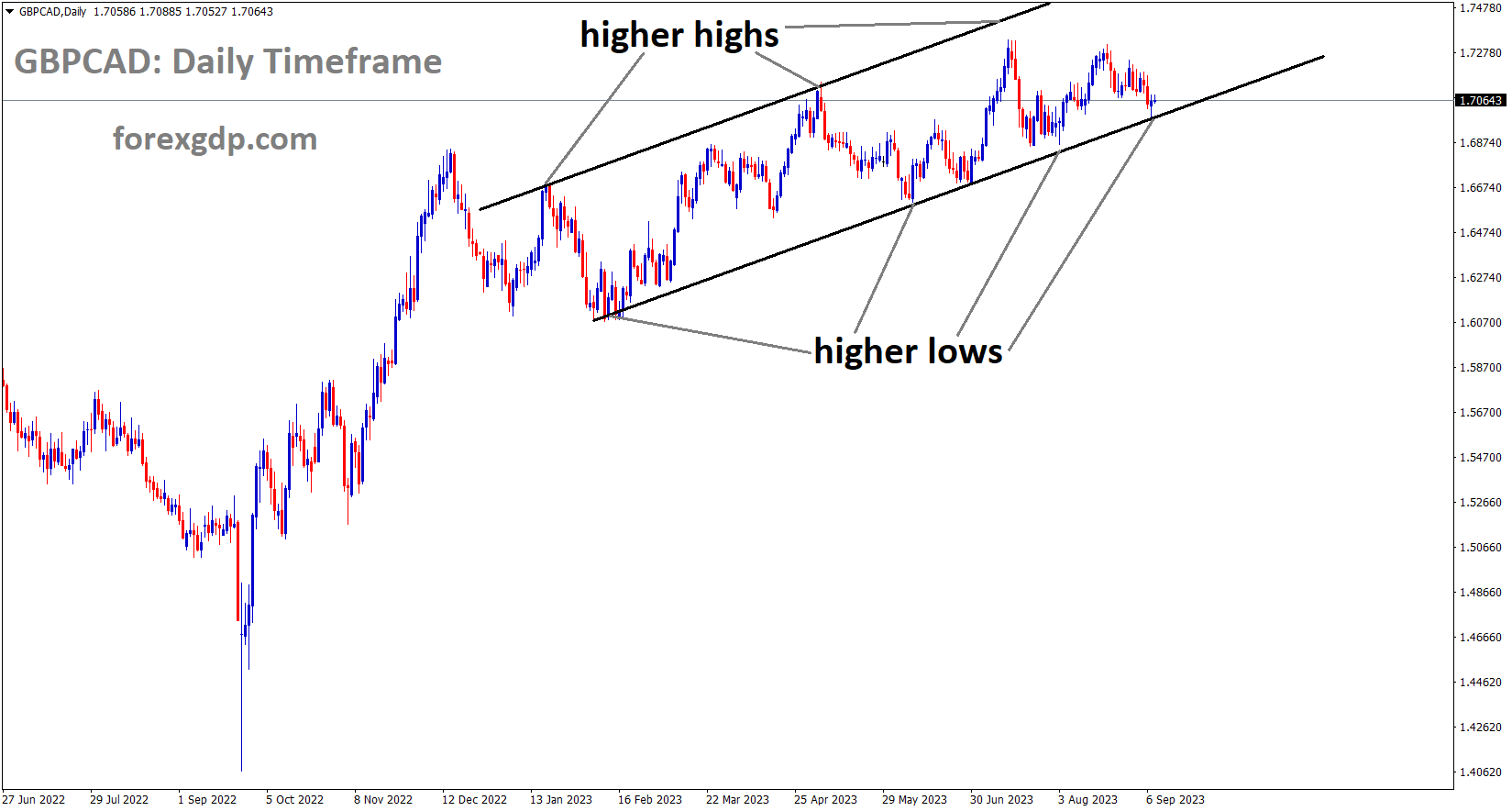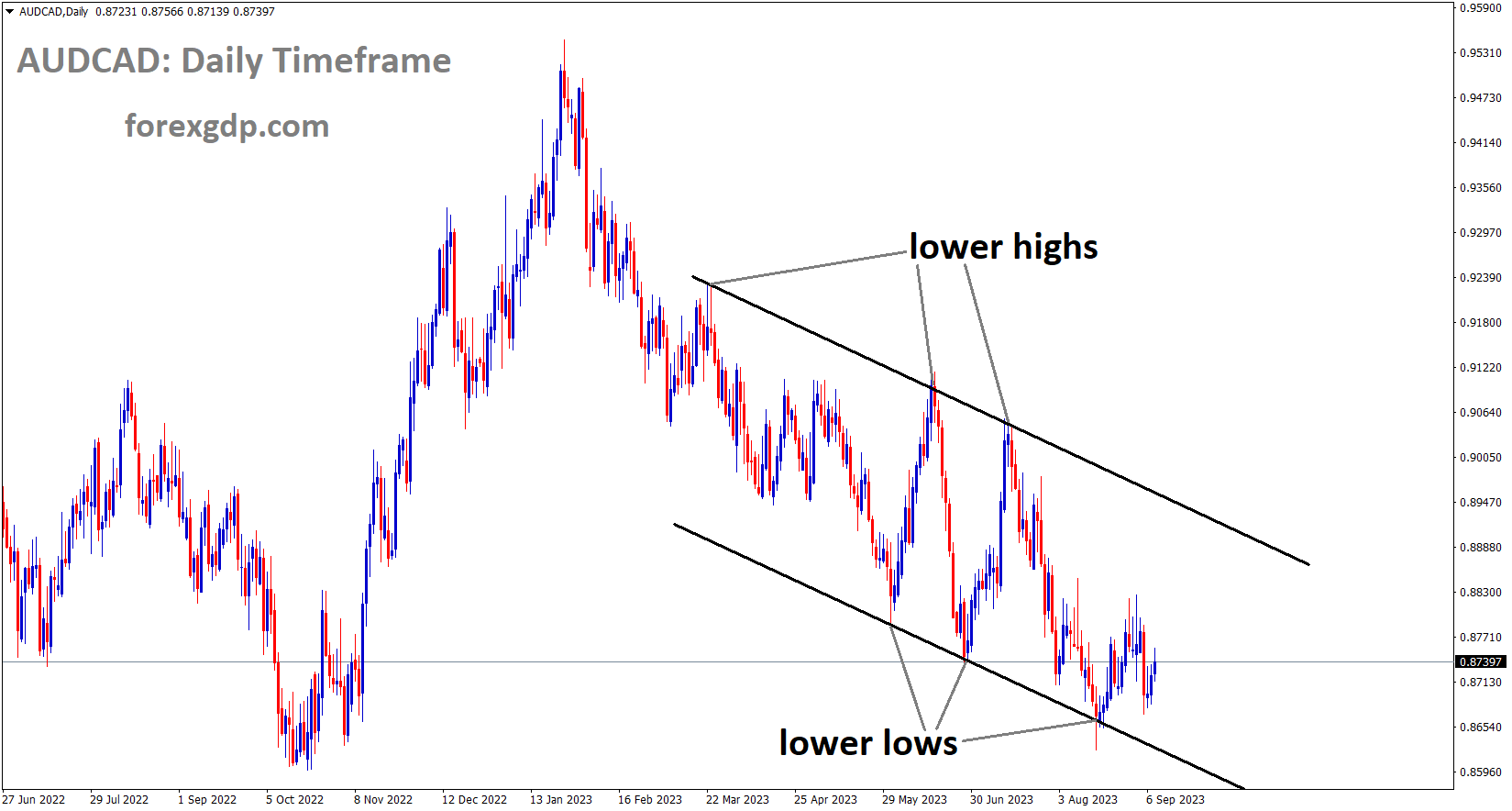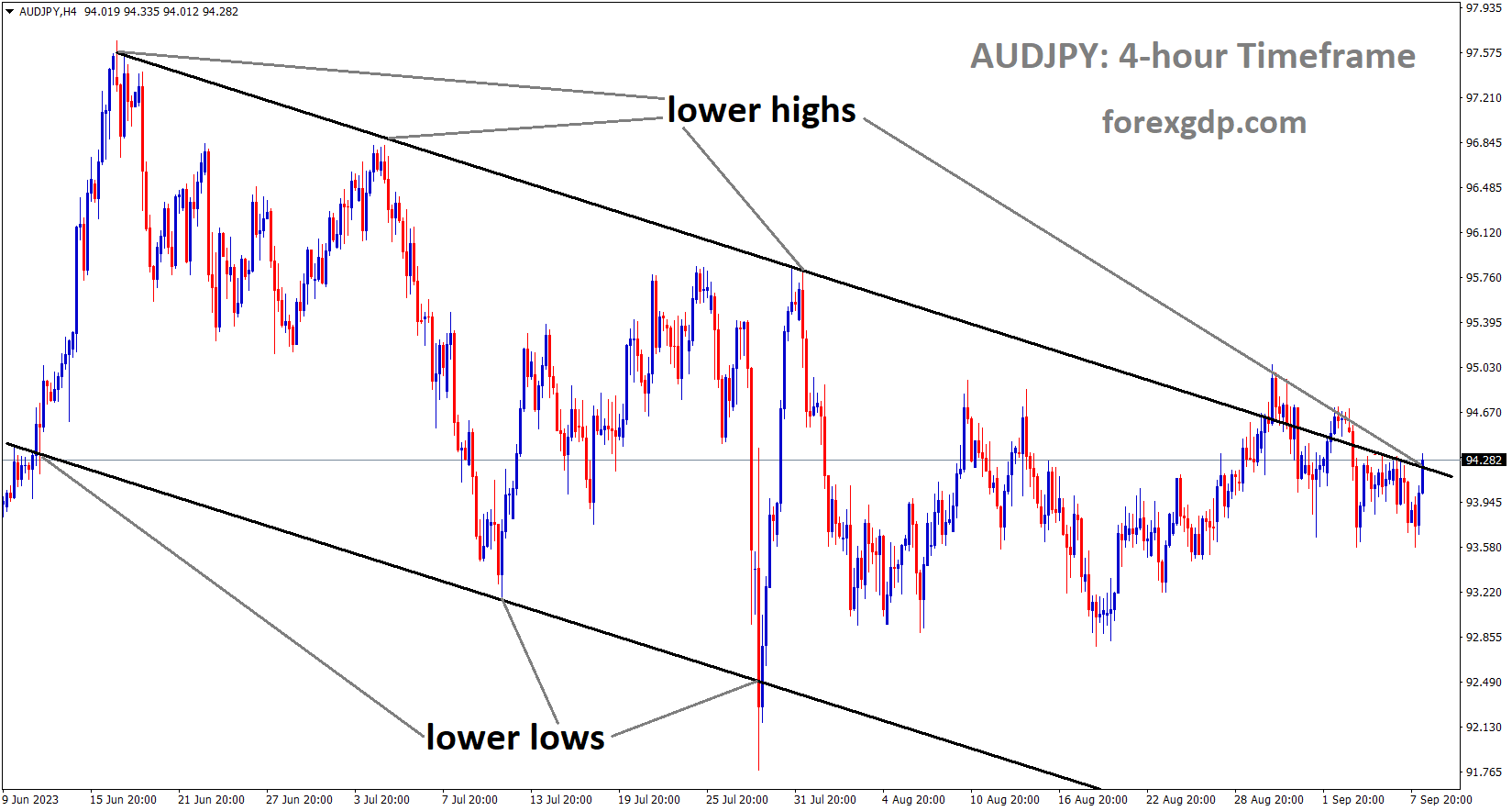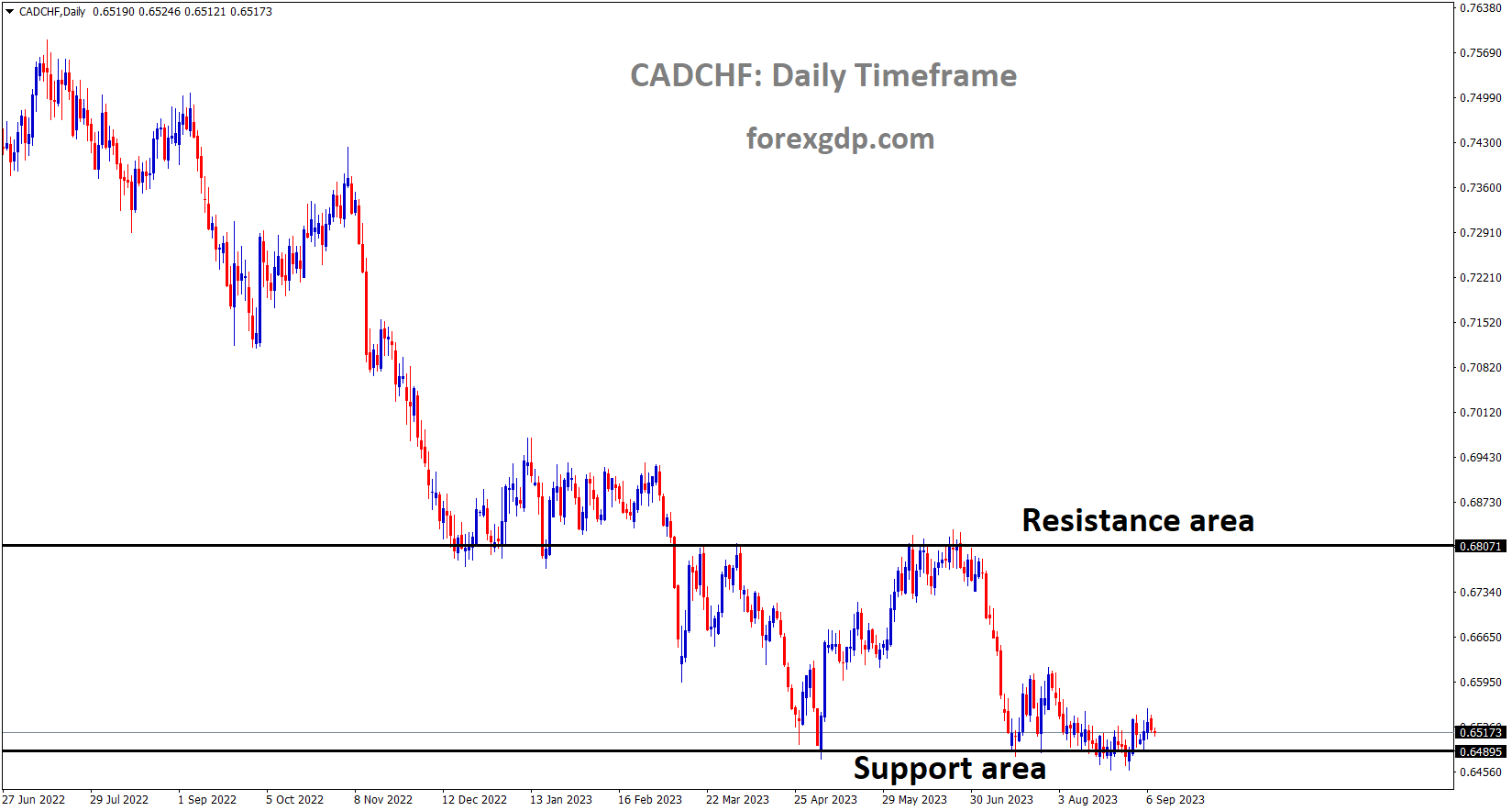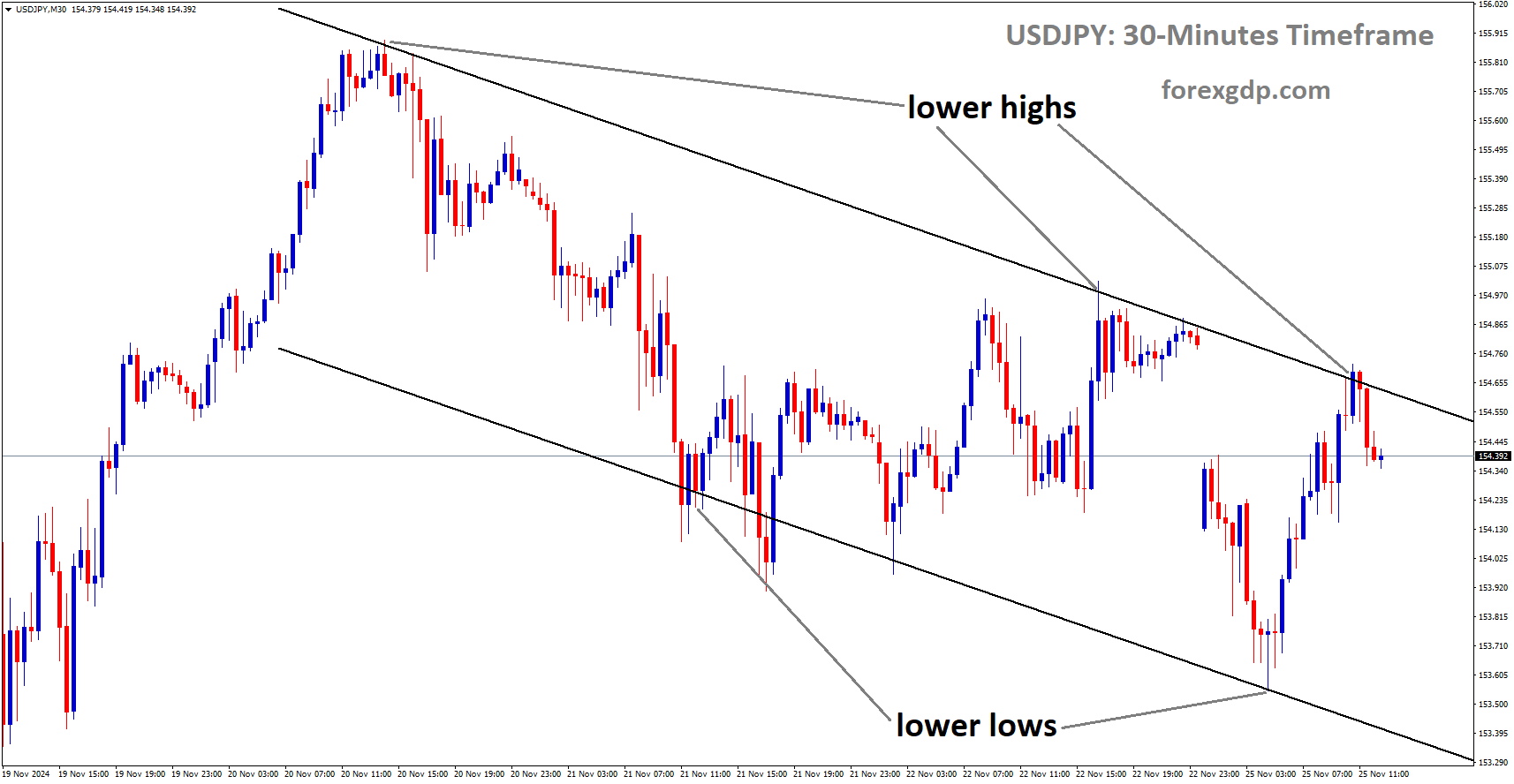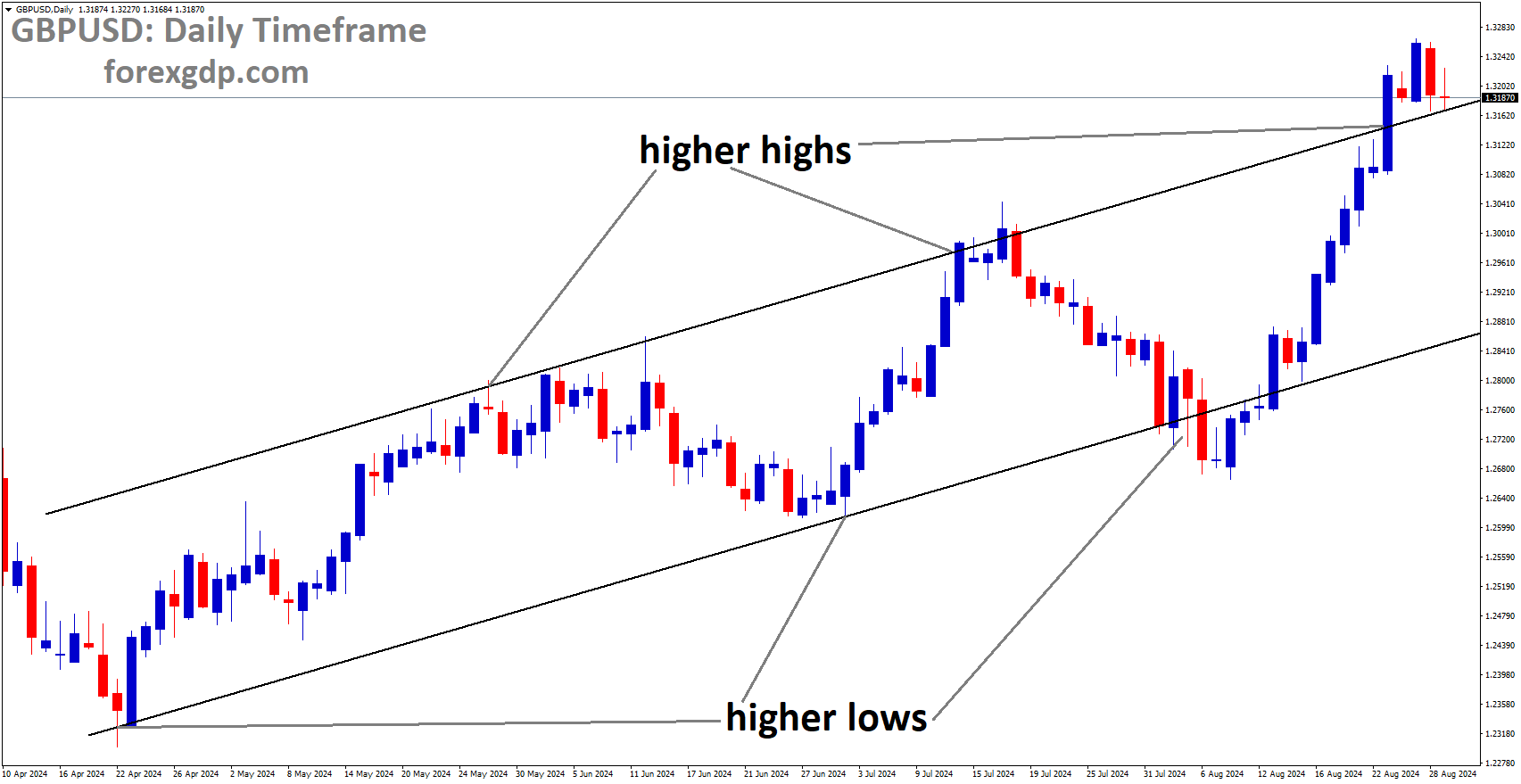XAUUSD Analysis
XAUUSD Gold price has broken the Descending channel in upside
The US Q2 labour cost rose to 2.2% from 1.6% in the previous reading, and the US initial jobless claims came in at 216k versus 229K, which is a more positive reading for the US Dollar. The price of gold fell as the US dollar rose.
The gold price rises for the second day in a row, trading around $1,920 per troy ounce during the Asian session on Friday. The yellow metal’s price is seeing minor support as the US Dollar (USD) falls after a three-day winning streak, which could be attributed to a drop in US Treasury yields. Ten-year US Treasury bond yields fell to 4.22%, a 1.36% drop in two days. The US Dollar Index (DXY), which measures the performance of the US dollar against six other major currencies, is trading around 104.90 points below its high since April. The index continues to applaud the steady stream of positive data about the state of the US economy. The United States (US) data released on Thursday showed that US Initial Jobless Claims as of September 1 were 216K, down from the previous figure of 229K. The figure was expected to increase to 234K. While US unit labour costs (Q2) increased to 2.2% from 1.6% the previous quarter, the trend was expected to continue.
XAGUSD Analysis
XAGUSD Silver price is moving in an ascending channel and the market has reached the higher low area of the channel
The recent strength of the US Dollar (USD) appears to be rooted in investors’ growing confidence in a more hawkish approach from the US Federal Reserve (Fed). Market participants appear to have priced in the possibility of a 25 basis point (bps) interest rate hike during the Fed’s November and December meetings, as well as the Fed maintaining higher interest rates for an extended period. This scenario has the potential to limit gold’s upward trajectory. Investor confidence remains low, owing primarily to persistent concerns about China’s deteriorating economic conditions and ongoing trade tensions with the United States (US). These risks, which are linked to China’s economic health and trade relations, have the potential to dampen precious metal demand.
Nonetheless, it is worth noting that China has recently implemented a series of policy measures aimed at revitalising its struggling economy, particularly after its post-pandemic recovery experienced a rapid downturn. Furthermore, more policy actions are expected in the near future. Furthermore, the G20 leaders’ summit is set to begin this Saturday in New Delhi. Notably, US President Joe Biden will attend, but Chinese President Xi Jinping will not, exacerbating the already strained and deteriorating relationship between the two superpowers.
USDCHF Analysis
USDCHF has broken the Descending channel in upside
The Swiss unemployment rate was 2.1%, as expected, strengthening the Swiss Franc against other currencies.
On Thursday, the USD/CHF gained ground, supported by a strong USD, with the DXY index trading at highs above 105.00 for the first time since March. On the data front, the United States reported that initial jobless claims were lower than expected in the first week of September, with the headline figure of 216,000, lower than the expected figure of 234,000 and slower than the previous 229,000. In Switzerland, the unemployment rate was 2.1% in August, which was in line with expectations.
What appears to be strengthening the USD is investors’ hawkish bets on the Federal Reserve (Fed) as a result of continued positive reports on US economic activity. Despite falling US Treasury yields, the CME FedWatch tool suggests that swaps markets are pricing in nearly 40% of a 25 basis point (bps) hike by the Fed at its November and December meetings.
EURUSD Analysis
EURUSD is moving in an Ascending channel and the market has reached the higher low area of the channel
At this week’s G20 meeting in India, US Secretary of State Janet Yellen stated that the Russia war raises food and energy prices. The G20 meeting is more effective now that Russia is not present.
On the sidelines of the G20 Summit in India on Friday, US Treasury Secretary Janet Yellen stated that “the negative influence is the Russia war, which has elevated food and energy prices,” adding that the US is “aware of risks to global growth.” The most important thing we could do for global growth is for Russia to end its bloody conflict with Ukraine. China’s economic challenges are being monitored, but they do not appear to have a direct impact on the United States. The United States’ and India’s goals in addressing challenges such as pandemic preparedness have coincided. G20 has been very effective under India’s presidency, in my opinion. G20 is very effective even without Russia’s active participation.
EURCHF Analysis
EURCHF is moving in the Box pattern and the market has reached the horizontal support area of the pattern
According to Commerzbank analysts, the ECB would like to keep key rates unchanged at next week’s meeting due to the weakening economy and slowing inflation to the target level.
Commerzbank analysts provide an early preview of what they expect from the European Central Bank’s ECB monetary policy meeting next week. Many market participants anticipate that the ECB will raise key interest rates further at its meeting next week. This is not our prediction. Given the weak economy and the downward trend in inflation, a majority of ECB council members are likely to vote for unchanged key rates.
EURNZD Analysis
EURNZD is moving in an Ascending channel and the market has fallen from the higher high area of the channel
NZD Manufacturing sales fell 2.9% in the second quarter, compared to a 2.1% drop in the previous quarter. The NZ Trade Index increased by 0.40% in Q2 after falling by 1.5% in the previous quarter. The NZD Dollar is weak against the US Dollar due to China’s economic weakness.
On the New Zealand front, Statistics New Zealand reported on Thursday that the country’s Manufacturing Sales for the second quarter increased by 2.9%, compared to a 2.1% drop in the previous reading. Earlier this week, the ANZ Commodity Price for August fell to 2.9%, down from 2.6% in July. The New Zealand Terms of Trade Index rose 0.4% in the second quarter, compared to a 1.5% drop in the previous reading and a 1.3% drop expected. Aside from the data, the fear of a Chinese economic slowdown and a property debt crisis may put some downward pressure on the China-proxy New Zealand Dollar (NZD).
GBPCAD Analysis
GBPCAD is moving in an Ascending channel and the market has reached the higher low area of the channel
The Bank of England’s Governor, Andrew Bailey, stated that key interest rates are nearing a peak and that our Dovish policy stance will be maintained in the future. Last day, GBP fell against counter pairs as a result of this news.
The Pound Sterling (GBP) falls as a result of comments from Bank of England (BoE) Governor Andrew Bailey that the rate hike cycle may be nearing its end. Early Thursday, BoE Governor Bailey made dovish comments about the BoE rate hike cycle, implying that September’s rate call could mark the end of interest rate increases from the United Kingdom’s central bank. Swati Dhingra, a policymaker, also took to the airwaves, echoing Governor Bailey’s dovish rate outlook.
AUDCAD Analysis
AUDCAD is moving in the Descending channel and the market has rebounded from the lower low area of the channel
Analysts with the ANZ group In 2024, China’s CPI will be 1.8%. The CPI will rise once pork production begins. Due to supply-side cuts in pork and energy, the August CPI is expected to rise to 0.20% from -0.30%.
According to analysts at Australia and New Zealand Banking Group (ANZ), we forecast China’s Consumer Price Index (CPI) for 2024 at 1.8%, with contributions of 1.0ppt from food, 0.2ppt from energy, and 0.6ppt from the core. On the supply side, energy and pork production cuts are expected to raise August’s CPI to 0.2% from -0.3% previously. On the demand side, recent stronger-than-expected policy stimulus will gradually boost prices.
AUDJPY Analysis
AUDJPY is moving in the Descending channel and the market has reached the lower high area of the channel
The weaker Chinese economy and the strained US-China relationship cause the Australian Dollar to fall against other currencies. The reason for this problem is the RBA’s rate hold.
Concerns about worsening Chinese economic conditions, US-China trade tensions, and expectations that the Reserve Bank of Australia (RBA) will stop raising interest rates continue to weigh on the Australian Dollar (AUD). The RBA’s decision to keep interest rates on hold for the third consecutive meeting on Tuesday, combined with a lack of new hawkish signals, convinced investors that the central bank will maintain the status quo until the end of the year.
The Japanese GDP data for the second quarter came in at 1.2%, compared to 1.5% in the previous quarter and 1.3% expected. GDP data boosts the yen’s value against the US dollar. Bank of Japan policymakers stated that if stable, sustainable inflation is to be achieved, only rising interest rates from our side are possible.
According to the most recent data released by the Japanese Cabinet Office, the nation’s Gross Domestic Product (GDP) for the second quarter was 1.2% QoQ, down from 1.5% in the previous reading and worse-than-expected at 1.3%. Annual growth was 4.8% versus 6% previously, falling short of the market consensus of 5.5%. Meanwhile, the GDP Deflator Q2 came in at 3.5% YoY, up from 3.4% the previous quarter. Finally, Japanese labour cash earnings increased 1.3% year on year in July, compared to 2.3% the previous month.
Junko Nakagawa, a policymaker at the Bank of Japan (BoJ), stated on Thursday that it is appropriate to maintain an easy monetary policy for the time being. He also stated that Japan has yet to consistently achieve the BoJ’s price target. It is worth noting that the US-Japan monetary policy divergence may limit the Japanese Yen’s upside and act as a tailwind for USD/JPY for the time being. Furthermore, Japan’s top currency diplomat, Masato Kanda, stated that he is willing to closely monitor currency movements with a sense of urgency and that all options are available.
CADCHF Analysis
CADCHF is moving in the Box pattern and the market has rebounded from the horizontal support area of the pattern
The unemployment rate in Canada is 5.6%, which is higher than the rate in the United States. Today, CAD is weaker against counter pairs due to higher-than-expected data. CPI is higher at 3.2%, and the Bank of Canada will keep rates unchanged until inflation falls below the 2% target. GDP shrank to -0.20% in Q2, indicating a minor recession in the Canadian economy.
Statistics Canada will release the Canadian Labour Force Survey report on Friday at 12:30 p.m. GMT. Markets expect the Canadian labour market to remain slack, justifying the Bank of Canada’s (BoC) steady interest rate decision announced on Wednesday. After raising rates by 25 basis points (bps) in June and July, the Bank of Canada maintained its key interest rate at 5.0% at its September policy meeting. Nonetheless, the Bank of Canada left the door open for further tightening if inflationary pressures persisted. The central bank acknowledged the recent increase in Canadian inflation, but expressed concern about the economy’s outlook in the face of loosening labour market conditions. “Given recent evidence that excess demand in the economy is easing, and given the lag effects of monetary policy,” the Bank of Canada said in its policy statement. According to Statistics Canada, the economy has lost jobs in two of the previous three months. Canadian GDP unexpectedly fell 0.2% year on year in the second quarter and stagnated in July, indicating that the economy may have already entered a mild recession. Meanwhile, annual inflation in the North American economy rose faster than expected in July, reaching 3.3%. The Core Consumer Price Index (CPI) remained stubbornly high in July, at 3.2%, despite expectations for a 2.8% increase.
The upcoming Canadian labour market report, particularly wage inflation data, is expected to have a significant impact on the Bank of Canada’s next policy decision. “Tightness in the Canadian labour market has continued to ease gradually, but wage growth remains around 4% to 5%,” the Bank said in a policy statement. Economists predict that Canada’s unemployment rate will rise slightly to 5.6% in August, up from 5.5% in July. The economy is expected to add 15K jobs in the reported month after losing 6.4K jobs unexpectedly in July. Average hourly wages, which the Bank of Canada closely monitors, increased 5.0% year on year in July. Analysts at TD Securities (TDS) said of the upcoming employment data, “we expect the economy to add 20k jobs in August, slightly below the 6m trend and well below levels required to keep up with population growth, with a partial rebound in construction helping to drive the headline print as hiring intentions fade.” A print of 20,000 would keep the UE rate at 5.5%, while softer wage growth (-0.6pp to 4.4%) would give the report a dovish tone.
The August Canadian Unemployment Rate, along with the Labour Force Survey, will be released on Friday at 12.30 GMT. Following the Bank of Canada’s interest rate decision, traders await Canadian employment data for a new direction. If there are more job losses in August, combined with slower wage inflation, markets may conclude that the Bank of Canada has completed its tightening cycle for the year. The Canadian Dollar is likely to face additional selling pressure in such a scenario. Higher-than-expected job creation and sticky wage inflation, on the other hand, could reinforce expectations of another BoC rate hike this year, rescuing the CAD from six-month lows against the US Dollar.
Don’t trade all the time, trade forex only at the confirmed trade setups.
Get Live Free Signals now: forexgdp.com/forex-signals/

